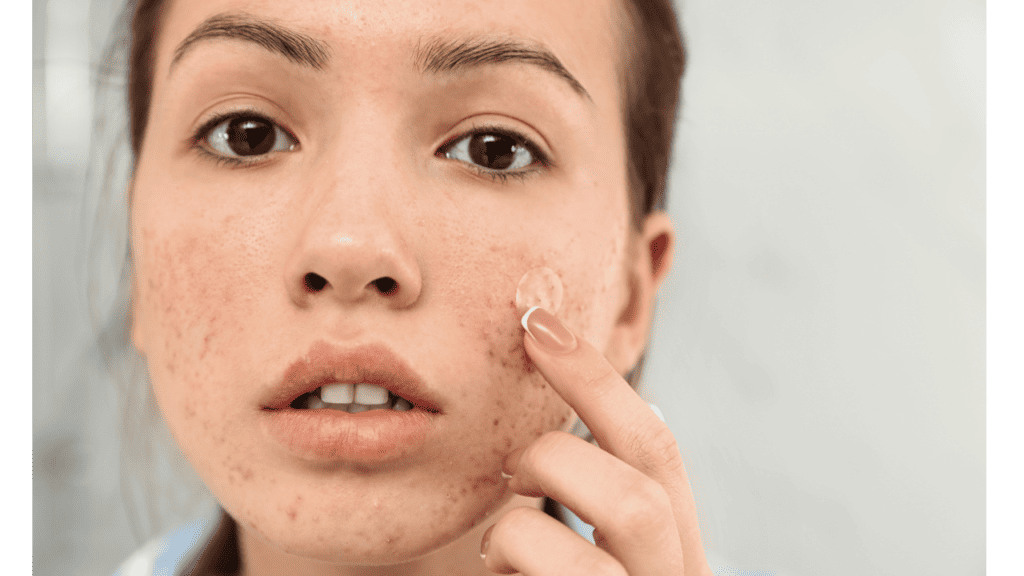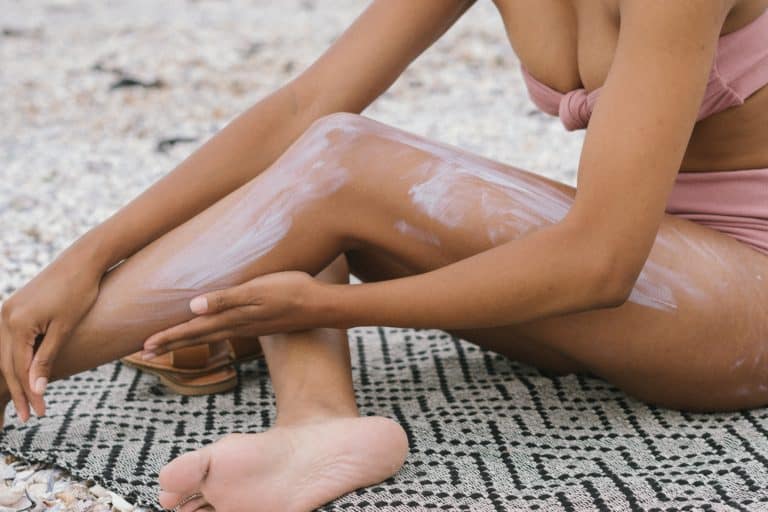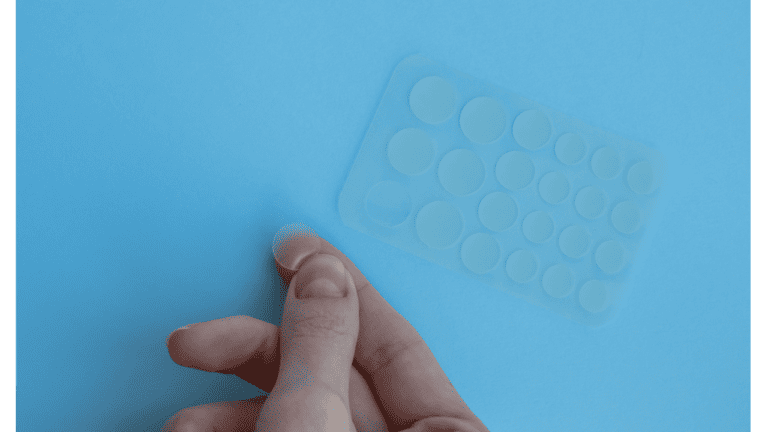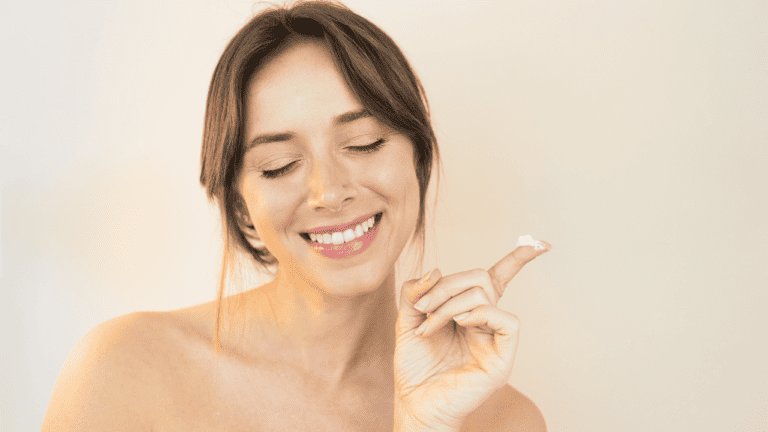Pimple patches are a popular and convenient way to treat acne. They work by absorbing oil and pus from a pimple, allowing it to heal faster. While pimple patches can be effective, they don’t always work for everyone. If you’ve tried using pimple patches without success, you may be wondering why they aren’t working for you. In this article, we’ll explore the common reasons pimple patches fail and provide tips on how to fix them.

Understanding Pimple Patches
Before we dive into why pimple patches may not be working for you, it’s important to understand how they work. Pimple patches are made of hydrocolloid, a gel-like material that absorbs moisture. When applied to a pimple, the patch creates a moist environment that helps to speed up healing. The patch also acts as a barrier, protecting the pimple from further irritation and preventing you from picking at it.
Common Reasons Pimple Patches Fail
While pimple patches can be effective, they don’t work for everyone. Some of the common reasons pimple patches fail include using the wrong type of patch, not properly preparing the skin before application, and not leaving the patch on long enough. In the next section, we’ll explore these reasons in more detail and provide tips on how to fix them.
Key Takeaways
- Pimple patches work by absorbing oil and pus from a pimple, allowing it to heal faster.
- Common reasons pimple patches fail include using the wrong type of patch, not properly preparing the skin before application, and not leaving the patch on long enough.
- To optimize healing with pimple patches, it’s important to choose the right type of patch, properly prepare the skin, and leave the patch on for the recommended amount of time.
Understanding Pimple Patches

Pimple patches are a popular acne treatment that work by absorbing excess oil and bacteria from the blemish. They are a type of hydrocolloid patch that adheres to the skin and creates a moist environment that promotes healing. In this section, we will discuss the different types of pimple patches and how they work.
Types of Pimple Patches
There are two main types of pimple patches: clear and colored. Clear patches are transparent and blend in with the skin, making them ideal for daytime use. Colored patches are designed to be worn overnight and are often larger and thicker than clear patches.
Some pimple patches are also medicated with ingredients like salicylic acid or tea tree oil to help treat the blemish. These patches may be more effective for people with severe acne or those who are prone to breakouts.
How Pimple Patches Work
Pimple patches work by creating a seal over the blemish that protects it from further irritation. The hydrocolloid material in the patch absorbs excess oil and bacteria from the pimple, which helps to reduce inflammation and redness. The adhesive on the patch also helps to keep the patch in place and prevent it from falling off.
When the patch is removed, it may contain white or yellow pus, which is a sign that the patch has successfully absorbed the impurities from the blemish. The patch may also contain dead skin cells and excess oil, which can be an indication that the patch was left on for too long.
Overall, pimple patches are a safe and effective way to treat acne. They are easy to use and can be worn throughout the day or overnight. However, it is important to choose the right type of patch for your needs and to follow the instructions carefully to ensure maximum effectiveness.
Common Reasons Pimple Patches Fail
Pimple patches have become a popular method for treating pimples, blemishes, and breakouts. They work by creating a moist environment that helps to draw out impurities and reduce inflammation. However, despite their effectiveness, pimple patches can sometimes fail to deliver the desired results. Here are some common reasons why pimple patches fail:
Incorrect Usage
One of the most common reasons why pimple patches fail is incorrect usage. It is important to follow the instructions carefully to ensure that the patch is applied correctly. If the patch is not placed on the pimple properly, it may not be able to effectively draw out the impurities. Additionally, if the patch is left on for too long, it may lose its adhesion and fall off, which can also result in the patch not working as intended.
Inappropriate Patch Type for Pimple
Another reason why pimple patches may fail is because the wrong type of patch is being used. Different types of pimples require different types of patches. For example, whiteheads and papules require a different type of patch than cysts and nodular acne. Using the wrong type of patch can result in the patch not adhering properly or not being able to effectively draw out impurities.
Insufficient Adhesion
Finally, insufficient adhesion can also cause pimple patches to fail. If the patch does not adhere properly to the skin, it may not be able to effectively draw out impurities. This can happen if the skin is oily or if there is hair or debris on the skin. It is important to clean the skin thoroughly before applying the patch to ensure that it adheres properly.
In conclusion, pimple patches can be an effective way to treat pimples, blemishes, and breakouts. However, it is important to use them correctly and choose the right type of patch for the type of pimple being treated. Additionally, ensuring that the patch adheres properly to the skin can help to ensure its effectiveness.
Skin Preparation for Pimple Patch Application

When it comes to using pimple patches, proper skin preparation is crucial for effective treatment. In this section, we will discuss two essential steps for skin preparation before applying pimple patches: cleansing and drying, and exfoliation.
Cleansing and Drying
Before applying pimple patches, it is important to cleanse the skin thoroughly to remove any dirt, oil, or makeup. This will ensure that the patch adheres properly to the skin and that the active ingredients can penetrate the pores effectively. Cleansing also helps to prevent further breakouts by removing any bacteria that may be present on the skin.
After cleansing, it is important to dry the skin thoroughly. Excess moisture can prevent the patch from adhering properly, which can lead to ineffective treatment. Gently pat the skin dry with a clean towel, being careful not to rub or irritate the skin.
Exfoliation
Exfoliation is an important step in any skincare routine, but it is especially important when using pimple patches. Exfoliation helps to remove dead skin cells and unclog pores, allowing the active ingredients in the patch to penetrate the skin more effectively.
There are several ways to exfoliate the skin, including physical exfoliation with scrubs or brushes, and chemical exfoliation with acids or enzymes. It is important to choose an exfoliation method that is appropriate for your skin type and to avoid over-exfoliating, which can irritate the skin and cause further breakouts.
By following these simple steps for skin preparation, you can ensure that your pimple patches are working effectively to treat your acne. Remember to always choose patches that are appropriate for your skin type and to follow the instructions carefully for best results.
Optimizing Healing with Pimple Patches
Pimple patches, also known as hydrocolloid patches, are a popular treatment for acne-prone skin. These patches work by absorbing excess oil and pus from the pimple, reducing inflammation, and promoting healing. However, not all pimple patches are created equal, and using the wrong patch or applying it incorrectly can lead to disappointment.
Choosing the Right Patch
When it comes to choosing the right pimple patch, there are a few factors to consider. First, consider the size of the patch. If the patch is too small, it may not cover the entire pimple, which can lead to incomplete healing. On the other hand, if the patch is too large, it may be noticeable and difficult to conceal with makeup.
Second, consider the thickness of the patch. Thicker patches are more effective at absorbing excess oil and pus, but they may be more noticeable and uncomfortable to wear. Thinner patches are less noticeable and more comfortable, but they may not be as effective at absorbing oil and pus.
Finally, consider the ingredients in the patch. Some patches contain additional ingredients such as tea tree oil or salicylic acid, which can help to further reduce inflammation and promote healing. However, these ingredients may not be suitable for those with sensitive skin, so it’s important to read the label carefully and choose a patch that is appropriate for your skin type.
Timing and Duration of Application
In addition to choosing the right patch, it’s also important to apply the patch correctly. Pimple patches should be applied to clean, dry skin and left on for several hours or overnight. It’s important to avoid touching or picking at the pimple while the patch is on, as this can interfere with the healing process.
The duration of application will depend on the severity of the pimple. For small pimples, a few hours may be sufficient, while larger pimples may require overnight application. It’s important to follow the instructions on the packaging and remove the patch once it has become saturated with oil and pus.
In conclusion, pimple patches can be an effective treatment for acne-prone skin when used correctly. By choosing the right patch and applying it at the right time and for the right duration, users can optimize healing and see improvements in their skin.
Alternatives and Complementary Treatments
When it comes to treating acne, there are many alternatives and complementary treatments available. These treatments can be used in addition to or instead of traditional pimple patches. Below are some of the most popular alternatives and complementary treatments for acne.
Topical Acne Treatments
Topical acne treatments are applied directly to the skin and can help to reduce inflammation and prevent new breakouts. Salicylic acid, tea tree oil, and benzoyl peroxide are some of the most common ingredients found in topical acne treatments. Salicylic acid works by exfoliating the skin and unclogging pores, while tea tree oil has antibacterial properties that can help to kill acne-causing bacteria. Benzoyl peroxide works by reducing the amount of acne-causing bacteria on the skin.
Prescription Medications
Prescription medications may be necessary for severe acne cases. Retinoids, such as adapalene, are commonly prescribed for acne. Retinoids work by increasing cell turnover and preventing the formation of new pimples. Niacinamide is another prescription medication that can be used to treat acne. It works by reducing inflammation and improving the skin’s barrier function.
Natural Remedies
Many natural remedies can be used to treat acne. These remedies are often gentler on the skin than traditional acne treatments. One popular natural remedy is honey. Honey has antibacterial properties and can help to reduce inflammation. Aloe vera is another natural remedy that can be used to treat acne. It has anti-inflammatory properties and can help to soothe irritated skin.
In conclusion, alternatives and complementary treatments can be effective in treating acne. Topical acne treatments, prescription medications, and natural remedies are all viable options. It is important to choose a treatment that works best for your skin type and severity of acne.
When to Consult a Dermatologist
While pimple patches can be effective in treating mild to moderate acne, persistent acne issues and severe acne conditions require the attention of a dermatologist. Dermatologists are medical professionals who specialize in treating skin, hair, and nail conditions. They are experts in diagnosing and treating various skin conditions, including acne.
Persistent Acne Issues
If a patient has been using pimple patches for several weeks and has not seen any improvement in their acne, it may be time to consult a dermatologist. Persistent acne issues can be frustrating and can negatively impact a person’s self-esteem. A dermatologist can provide a thorough evaluation of the patient’s skin and recommend a personalized treatment plan that may include prescription medications or other therapies.
Severe Acne Conditions
Cystic acne is a severe form of acne that is characterized by large, inflamed cysts that can lead to scarring if left untreated. Pimple patches are not effective in treating cystic acne, and a dermatologist should be consulted immediately. Dermatologists can provide a range of treatments for severe acne conditions, including prescription medications, laser therapy, and chemical peels.
In addition to treating acne, dermatologists can also screen patients for skin cancer and provide advice on how to care for acne-prone skin. It is essential to seek medical attention from a dermatologist if a patient experiences persistent or severe acne issues to prevent scarring and other complications.
Preventing Future Breakouts
Preventing future breakouts is just as important as treating current ones. In order to keep the skin clear and healthy, it is crucial to maintain a consistent skincare routine and make certain lifestyle and diet considerations.
Maintaining a Skincare Routine
A proper skincare routine is essential for preventing future breakouts. This includes cleansing, toning, and moisturizing the skin twice a day. It is important to use products that are specifically formulated for acne-prone skin and contain acne-fighting ingredients such as salicylic acid, benzoyl peroxide, or tea tree oil. It is also important to use non-comedogenic products that won’t clog pores.
Exfoliating the skin once or twice a week can also help prevent future breakouts by removing dead skin cells that can clog pores and lead to blemishes. However, it is important not to over-exfoliate as this can cause irritation and inflammation.
Lifestyle and Diet Considerations
Lifestyle and diet can also play a role in preventing future breakouts. Getting enough sleep, managing stress levels, and exercising regularly can all contribute to healthy skin. It is also important to avoid touching the face and to keep hair and hands away from the skin as much as possible.
Diet can also play a role in preventing future breakouts. Consuming a balanced diet that is rich in fruits and vegetables, whole grains, and lean protein can help keep the skin healthy. It is also important to limit the intake of processed foods, sugary drinks, and dairy products as these can contribute to excess oil production and inflammation in the skin.
In summary, preventing future breakouts requires a consistent skincare routine, lifestyle modifications, and a healthy diet. By taking these steps, individuals can help keep their skin clear and blemish-free.
Understanding Side Effects and Risks
When it comes to using pimple patches, it’s important to understand the potential side effects and risks. While pimple patches are generally considered safe and effective, they can cause unwanted effects in some people. In this section, we’ll explore some of the most common side effects and risks associated with pimple patches.
Irritation and Allergic Reactions
One of the most common side effects of pimple patches is skin irritation. This can occur in people with sensitive skin or those who are allergic to the materials used in the patch. Symptoms of skin irritation may include redness, itching, and swelling around the area where the patch is applied. In some cases, the irritation may be severe enough to cause a rash or blistering.
To avoid skin irritation, it’s important to choose a pimple patch that is designed for your skin type. If you have sensitive skin, look for patches that are labeled as “gentle” or “for sensitive skin.” You can also try doing a patch test before using the patch on your face. Apply a small amount of the patch to your inner arm and wait 24 hours to see if you experience any adverse reactions.
Overuse and Misuse
Another risk associated with pimple patches is overuse or misuse. Some people may be tempted to use the patches more frequently or for longer periods than recommended, which can lead to skin irritation or other side effects. Additionally, using pimple patches on open wounds or broken skin can increase the risk of infection.
To avoid overuse or misuse of pimple patches, it’s important to follow the instructions carefully. Most patches are designed to be used once or twice a day for a limited period of time. If you’re not sure how often to use the patch, consult with a dermatologist or other healthcare professional.
In summary, while pimple patches can be a useful tool for treating acne, it’s important to understand the potential side effects and risks. By choosing the right patch for your skin type and using it as directed, you can minimize the risk of adverse reactions and get the best results possible.
Evaluating Treatment Success
When it comes to treating acne, it’s important to evaluate treatment success to determine whether the treatment is working as intended. There are a few key factors to consider when assessing the improvement of the skin.
Assessing Skin Improvement
One of the most obvious signs of improvement is a reduction in the number of pimples and blemishes on the skin. It’s important to keep track of the number of pimples and blemishes before and after treatment to determine whether the treatment is effective. Additionally, evaluating skin tone can be helpful in determining whether the treatment is working. If the skin tone is more even and less red, this is a good indication that the treatment is working.
Another important factor to consider is the reduction of dark spots and scarring. If the treatment is successful, dark spots and scarring should begin to fade over time. It’s important to keep in mind that this may take some time, so it’s important to be patient and consistent with the treatment.
Long-Term Skin Health
While it’s important to evaluate short-term improvement, it’s also important to consider long-term skin health. This means taking steps to prevent future breakouts and maintain healthy skin. This can include using a gentle cleanser and moisturizer, avoiding harsh chemicals and abrasive scrubs, and protecting the skin from sun damage.
In addition to these steps, wound care is also important to prevent scarring and promote healing. This includes keeping the skin clean and dry, avoiding picking or squeezing pimples, and using a topical antibiotic if necessary.
Overall, evaluating treatment success is an important step in treating acne and maintaining healthy skin. By keeping track of the number of pimples and blemishes, assessing skin tone and dark spots, and taking steps to maintain long-term skin health, it’s possible to achieve clear, healthy skin.
Frequently Asked Questions
How can you effectively use a pimple patch on cystic acne?
Cystic acne can be challenging to treat with a pimple patch. However, there are a few things one can do to make the patch more effective. Firstly, it is essential to cleanse the skin thoroughly before applying the patch. This will ensure that the patch adheres to the skin correctly. Secondly, one should consider using a patch that contains active ingredients such as salicylic acid or tea tree oil. These ingredients can penetrate the skin and help to reduce inflammation and redness. Finally, one should leave the patch on for at least six hours or overnight to allow the active ingredients to work effectively.
What are the different types of pimple patches available and their uses?
There are several types of pimple patches available in the market. The most common type is the hydrocolloid patch, which works by absorbing excess oil and pus from the pimple. Another type is the medicated patch, which contains active ingredients such as salicylic acid or tea tree oil to help reduce inflammation and redness. There are also patches that are designed to be worn under makeup, which are thinner and less noticeable. Finally, there are patches that are designed for specific areas such as the chin or nose.
How to prevent pimple patches from leaving red marks or scars?
Pimple patches are designed to reduce inflammation and prevent scarring. However, if not used correctly, they can sometimes leave red marks or scars. To prevent this, it is essential to ensure that the patch is not left on for too long. Leaving the patch on for an extended period can cause irritation and damage to the skin. It is also crucial to avoid picking at the pimple or removing the patch too forcefully. Doing so can cause further damage to the skin and increase the risk of scarring. Finally, one should consider using a patch that contains active ingredients such as vitamin C or niacinamide, which can help to reduce the appearance of scars.






